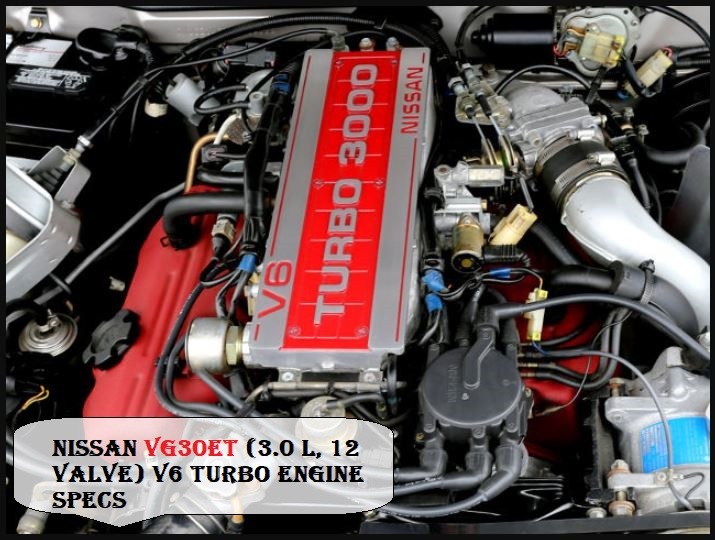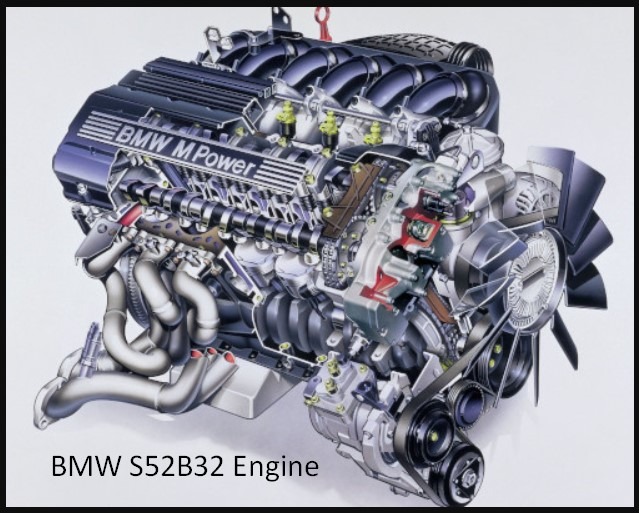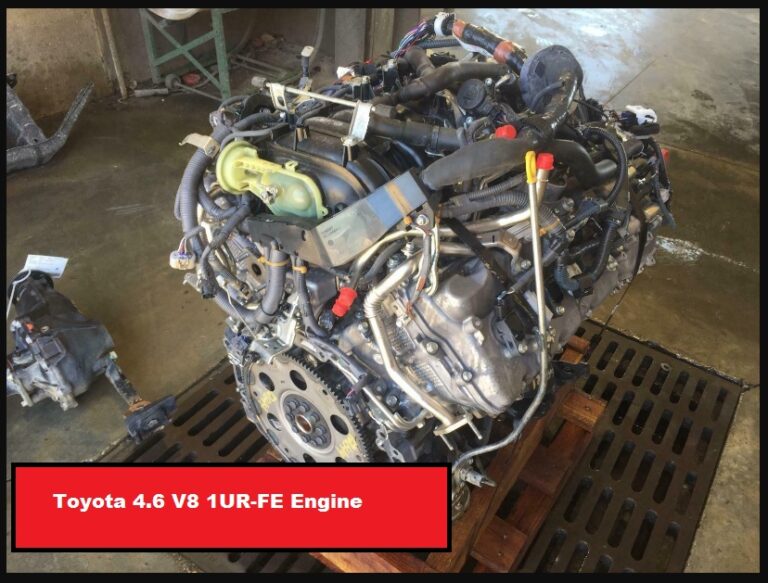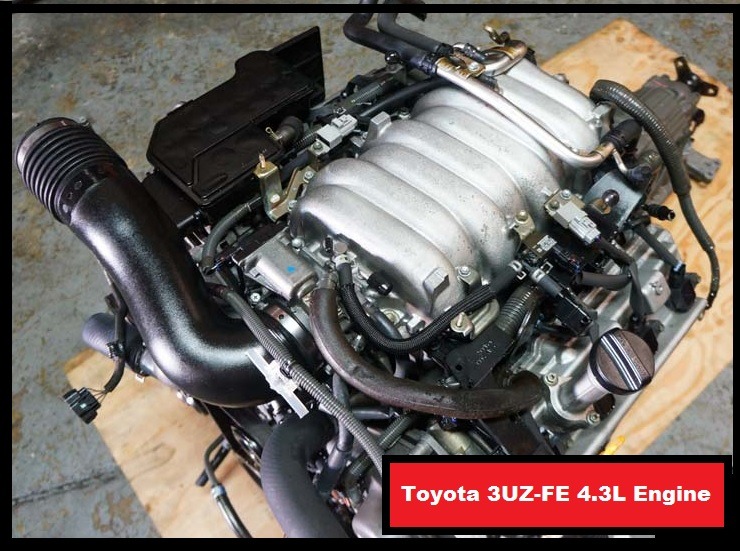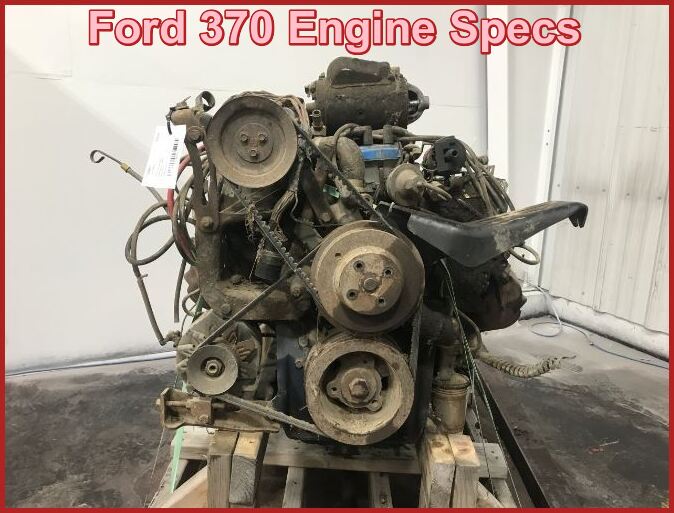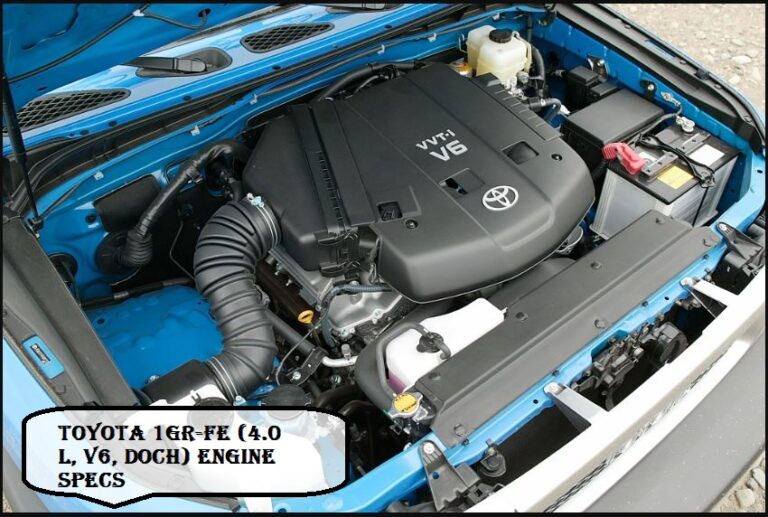Nissan VG30ET (3.0 L, 12 valve) V6 turbo Engine Specs, Review & Service Data
Nissan VG30ET Engine Specs
The Nissan VG30ET is a turbocharged 3.0 l (180.62 cu.in. 2,960 cc) V6 60° straight-four, four-stroke cycle gasoline engine from Nissan VG-family.
The Nissan VG30ET engine is fitted with multi-point fuel injection and a mechanically timed electrical ignition system with a single ignition coil and mechanical distributor.
The Nissan VG30ET engine delivered from 203 PS (149 kW; 200 HP) of maximum horsepower for USDM and JDM to 234 PS (172 kW; 230 HP) for the European market and from 308 Nm (31.42 kg·m; 227.3 ft·lb) to 342 Nm (34.88 kg·m; 252.4 ft·lb) of torque, respectively.
In April 1987, the “W” series VG30 was released, and the output power was increased to 208 PS (153 kW; 205 Horsepower).
The Nissan VG30ET engine cylinder bore, and the piston stroke is 87.0 mm (3.43 in) and 83.0 mm (3.27 in), respectively.
The Nissan VG30ET engine’s early version had a compression ratio rating of 7.8:1. Since 1988, the compression ratio was increased to 8.3:1.
The Nissan VG30ET engine features a cast-iron block, two aluminum heads with single overhead camshafts, and two valves per cylinder.
Until 1987 the engine used a Garrett T3 turbocharger (6.8 psi; 0.47 bar); since the 1988 model year, the Nissan VG30ET engine has used Garrett T25 (4.5 psi; 0.31 bar) to reduce turbo lag.
The breakdown of the Nissan VG30ET engine code is as follows:
- VG – Engine Family
- 30 – 3.0 Liter Displacement
- E – Multi-Point Fuel Injection
- T – Turbocharged
Nissan VG30ET (3.0 L, 12 valve) V6 turbo Engine Specs
Engine Specifications
| Engine code | VG30ET |
| Layout | Four stroke, V6 |
| Fuel type | Gasoline (petrol) |
| Production | |
| Displacement | 3.0L, 2,960 cc (180.62 cu in) |
| Fuel system | Multi Point Fuel Injection |
| Power adder | Garrett T3, Garrett T25 |
| Power output | 195 PS (143 kW; 192 HP) at 5,200 rpm 203 PS (149 kW; 200 HP) at 5,200 rpm 208 PS (153 kW; 205 HP) at 5,200 rpm 234 PS (172 kW; 230 HP) at 5,200 rpm |
| Torque output | 308 Nm (31.42 kg·m; 227.3 ft·lb) 342 Nm (34.88 kg·m; 252.4 ft·lb) |
| Firing order | 1-2-3-4-5-6 |
| Dimensions (L x W x H): | – |
| Weight | ~ 220 kg (485 lbs) |
Cylinder head
| Block head alloy | Aluminium | |
| Valve Arrangement: | SOHC, belt drive | |
| Head surface flatness | Less than 0.05 mm (0.002 in) | |
| Valves: | 12 (2 valves per cylinder) | |
| Intake valve timing | 252° “W” – 248° |
|
| Exhaust valve timing: | 252° “W” – 248° |
|
| Valve head diameter: | INTAKE | 42.0-42.2 mm (1.654-1.661 in) |
| EXHAUST | 35.0-35.2 mm (1.378-1.386 in) | |
| Valve length: | INTAKE | 125.3-125.9 mm (4.93-4.96 in) |
| EXHAUST | 124.2-124.8 mm (4.89-4.91 in) | |
| Valve stem diameter: | INTAKE | 6.965-6.980 mm (0.2743-0.2748 in) |
| EXHAUST | 7.945-7.960 mm (0.3128-0.3134 in) | |
| Valve spring free length: | OUTER | 51.2 mm (2.016 in) |
| INNER | 44.9 mm (1.768 in) | |
| Camshaft cam height: | INTAKE | 39.607-39.657 mm (1.5593-1.5613 in) 39.537-39.727 mm (1.5566-1.5641 in) |
| EXHAUST | 39.607-39.657 mm (1.5593-1.5613 in) 39.537-39.727 mm (1.5566-1.5641 in) |
|
| Camshaft journal diameter: | 46.935-46.955 mm (1.8478-1.8486 in) | |
Head tightening procedure and torque specs:
- Step 1: 39 Nm; 4.0 kg·m; 29 ft·lb
- Step 2: 123 Nm; 12.5 kg·m; 90 ft·lb
- Step 3: Loosen all bolts completely
- Step 4: 34-44 kg·m; 3.5-4.5 kg·m; 25-33 ft·lb
- Step 5: Turn all bolts 65-70° or to 123 Nm; 12.5 kg·m; 90 ft·lb
Camshaft sprocket bolts
- 78-88 Nm; 8.0-9.0 kg·m; 58-65 ft·lb
Cylinder block
| Cylinder block alloy | Cast-iron | |
| Compression ratio: | 7.8:1 or 8.3:1 | |
| Cylinder bore: | 87.0 mm (3.43 in) | |
| Piston stroke: | 83.0 mm (3.27 in) | |
| Number of piston rings (compression / oil): | 2 / 1 | |
| Number of main bearings: | 4 | |
| Cylinder inner diameter (standard): | 87.000-87.010 mm (3.4252-3.4256 in) | |
| Piston skirt diameter (standard): | 86.967-86.975 mm (3.4238-3.4242 in) | |
| Piston pin outer diameter: | 20.993-20.998 mm (0.8265-0.8267 in) | |
| Piston ring side clearance: | Top | 0.040-0.073 mm (0.0016-0.0029 in) |
| Second | 0.030-0.063 mm (0.0012-0.0025 in) | |
| Piston ring end gap: | Top | 0.21-0.44 mm (0.0083-0.0173 in) |
| Second | 0.18-0.44 mm (0.0083-0.0173 in) | |
| Oil | 0.20-0.72 mm (0.0079-0.0299 in) | |
| Connecting rod small end diameter: | 20.958-20.971 mm (0.8251-0.8256 in) | |
| Connecting rod center distance: | 154.1-154.2 mm (6.067-6.071 in) | |
| Crankshaft main journal diameter: | 62.975 mm (2.4763 in) | |
| Crankpin diameter: | 49.974 mm (1.9675 in) | |
| Crankshaft center distance: | 41.47-41.53 mm (1.6327-1.6350 in) | |
Main bearing cap bolts tightening procedure and torque specs:
- 90-100 Nm; 9.2-10.2 kg·m; 67-74 ft·lb in two-three stages
After securing bearing cap bolts, make sure crankshaft turns smoothly by hand.
Connecting rod bearing nut
- Step 1: 14-16 Nm; 1.4-1.6 kg·m; 10-12 ft·lb
- Step 2: Turn nuts 60-65° or 59-65 Nm; 6.0-6.6 kg·m; 43-48 ft·lb
Crankshaft pulley bolt
- 123-132 Nm; 12.5-13.5 kg·m; 90-98 ft·lb
Flywheel (M/T) or Drive plate (A/T) fixing bolts
- 83-93 Nm; 8.5-9.5 kg·m; 61-69 ft·lb
Maintenance Data
| Compression pressure | |
| Standard | 11.9 kg/m2 (169 psi) / 300 rpm |
| Minimun | 8.8 kg/m2 (125 psi) / 300 rpm |
| Compression differential limit between cylinders | 1.0 kg/m2 (15 psi) / 300 rpm |
| Oil system | |
| Oil consumption , L/1000 km (qt. per miles) | up to 0.5 (1 qt. per 1200 miles) |
| Recommended engine oil | 5W-30, 10W-30, 10W-40, 20W-40, 20W-50 |
| Oil type API | API SF |
| Engine oil capacity (Refill capacity) | With filter change 4.0 l (4-1/4 Us. qt., 3-1/2 Imp. qt) Without filter change 3.3 l (3-1/2 Us. qt., 2-7/8 Imp. qt.) |
| Oil change interval, km (miles) | Every 12,000 (7,500) |
| Ignition system | |
| Spark plug | Standard type: NGK BCPR6E-11 Hot type: BCPR5E-11 Cold type: BCPR7E-11 |
| Spark plug gap | 1.0-1.1 mm (0.039-0.043 in) |
Vehicle Applications
| Model | Years Produced |
| Nissan 300ZX Turbo (Z31) | 1984–1989 |
| Nissan Leopard | – |
| Nissan Gloria (Y30, Y31) | – |
| Nissan Cedric (Y30, Y31) | – |
| Nissan GTP ZX-Turbo Racecar | – |
Also Check:
- Nissan VG30DE Engine Specs
BMW M52B28 Engine Specs - BMW M50B25 Engine Specs
- Nissan KA24E Engine Specs
- Toyota 1GR-FE Engine Specs
- Kawasaki FH500V Engine Specs
- Kohler K582 engine Specs
- Kubota D905 Engine Specs
- Toyota 1FZ-FE Engine Specs
- Kubota D1105 Engine Specs
- Suzuki J20 Engine Specs
- Kubota V2203 Engine specs
- Nissan L28ET Engine Specs
- Toyota 1JZ-GTE Engine Specs
- Datsun 100A Engine Specs
Final Words
This concludes our discussion of the Nissan VG30ET (3.0 L, 12 valve) V6 turbo Engine specs and review; however, if you have any questions regarding this article, please submit them in the comment section below. We will do our best to respond to you as soon as possible.
